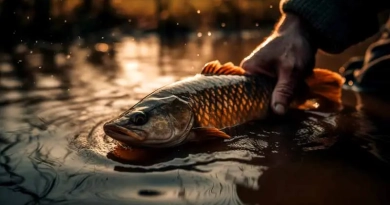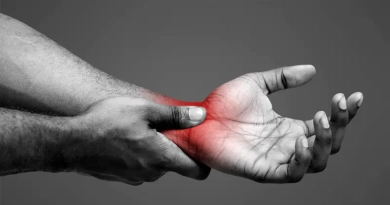
Can Kayaks Sink?
It was a crisp morning, the kind that teases you with the promise of adventure. The sea stretched out in front of me, an expanse of quiet, inviting mystery. My kayak, a trusty companion on countless journeys, rested by the water’s edge, ready for the day’s exploration. As I stood there, inhaling the briny air, a question surfaced in my mind, refusing to be ignored: “Can kayaks sink?” This question, deceptively simple, carried with it layers of implications.
Kayaks are symbols of freedom and adventure. They allow us to glide through water, experiencing the world from a unique perspective. But with this freedom comes an undercurrent of worry. The idea of a kayak sinking is a fear that can unsettle even the most experienced paddler. Understanding this fear, and addressing it, is crucial for safety and peace of mind on the water.
Options and Obstacles: Understanding Kayak Vulnerabilities
The design and construction of a kayak are key to its buoyancy and ability to stay afloat. Different types of kayaks have distinct characteristics, each presenting its own set of challenges and considerations.
Types of Kayaks
- Sit-on-Top Kayaks: Popular among beginners and recreational paddlers, these kayaks are almost unsinkable due to their sealed hull design. Even if they capsize, they won’t fill with water, making them a reliable choice for calm waters and novice paddlers.
- Sit-Inside Kayaks: These traditional kayaks feature a cockpit where the paddler sits. They offer more protection from the elements but can take on water if they capsize. However, most have bulkheads or air-filled compartments that provide buoyancy and prevent sinking.
- Inflatable Kayaks: Made from durable, puncture-resistant materials, these kayaks are designed for portability and ease of use. While robust, a significant puncture or tear can lead to deflation and potential sinking.
- Whitewater Kayaks: Built for the rough and tumble of whitewater rapids, these kayaks are designed to be resilient. However, their exposure to extreme conditions increases the risk of damage.
Obstacles to Staying Afloat
- Capsizing: This is the immediate and most common concern. While many kayaks are designed to be stable, the unpredictable nature of water means capsizing is always a possibility. Proper technique and experience are essential in mitigating this risk.
- Punctures and Holes: Sharp rocks, debris, and general wear and tear can puncture a kayak, allowing water to enter. This is particularly concerning for inflatable kayaks, but even rigid kayaks can sustain damage.
- Waterlogging: Overloading a kayak with gear or improper weight distribution can reduce its buoyancy, increasing the risk of water ingress and potential sinking.
The Best Solution: Ensuring Your Kayak Stays Afloat
Reflecting on this question, it became evident that the key to preventing a kayak from sinking lies in preparation, maintenance, and knowledge. Ensuring your kayak remains buoyant involves a combination of selecting the right equipment, performing regular inspections, and employing proper usage techniques.
Choosing the Right Kayak
Selecting a kayak suited to your needs and the environments you’ll be navigating is essential. For calm lakes and gentle coastal waters, a sit-on-top or recreational sit-inside kayak with bulkheads is ideal. For more challenging conditions, a whitewater kayak or a touring kayak with additional buoyancy features is necessary.
Regular Maintenance and Inspection
Before each outing, a thorough inspection of your kayak is imperative. Look for cracks, holes, or any signs of wear and tear. For inflatable kayaks, check for leaks or weakened seams. Maintaining your kayak in optimal condition reduces the risk of water ingress.
Proper Loading and Balance
Avoid overloading your kayak. Stick to the manufacturer’s weight recommendations and distribute your gear evenly to maintain balance and buoyancy. Overloading can compromise the kayak’s stability and increase the likelihood of taking on water.
Using Flotation Devices
Many kayaks come equipped with built-in flotation devices, such as bulkheads or air chambers. Ensure these are intact and functioning correctly. Additionally, consider using supplementary flotation bags, especially in the bow and stern compartments of sit-inside kayaks, to enhance buoyancy.
Learning Self-Rescue Techniques
Knowledge and practice of self-rescue techniques are vital. Techniques like the Eskimo roll, paddle float re-entry, and assisted rescues can help you recover from a capsize without compromising your kayak’s buoyancy.
Resources and Tools: Staying Equipped
Implementing these solutions requires specific resources and tools, essential for ensuring your kayak’s safety:
- Kayak Repair Kits: These kits typically include patches, adhesives, and tools for quick repairs. Carrying a repair kit is especially crucial for inflatable kayaks.
- Flotation Bags: Available in various sizes, flotation bags can be added to your kayak’s compartments to provide additional buoyancy.
- Paddle Floats: Used in self-rescue, paddle floats attach to your paddle to aid in re-entry and stabilize the kayak.
- Bilge Pumps and Sponges: Essential for removing water from the cockpit, especially in sit-inside kayaks. A bilge pump is particularly useful in rough waters.
- Safety Gear: Always wear a personal flotation device (PFD). It’s the first line of defense in case of a capsize.
Conclusion: Embracing the Adventure with Confidence
The sun had risen higher now, casting a warm glow over the water, and the question that had lingered in my mind felt answered. The possibility of a kayak sinking is real, but it is a manageable risk with the right knowledge and preparation. The kayak, a vessel of freedom and exploration, demands respect and care. By understanding its vulnerabilities and taking proactive measures, we can ensure it remains a reliable companion on our adventures.
As I pushed off from the shore, the water lapped gently against the hull, and I felt a deep sense of readiness. The mysteries of the water still held their allure, but I was equipped with the knowledge and tools to navigate them safely. The kayak, my slender craft, was not just a vessel but a partner in the journey.
So, dear reader, as you set out on your own kayaking adventures, remember this: the water is both friend and foe, and your kayak, a vessel of freedom, requires care and vigilance. Embrace the journey with curiosity and preparedness, and let the spirit of adventure guide you across the endless waters. With each paddle stroke, connect with the nature around you, confident in the knowledge that you are prepared for whatever the water may bring.






